What Is Copywriting?
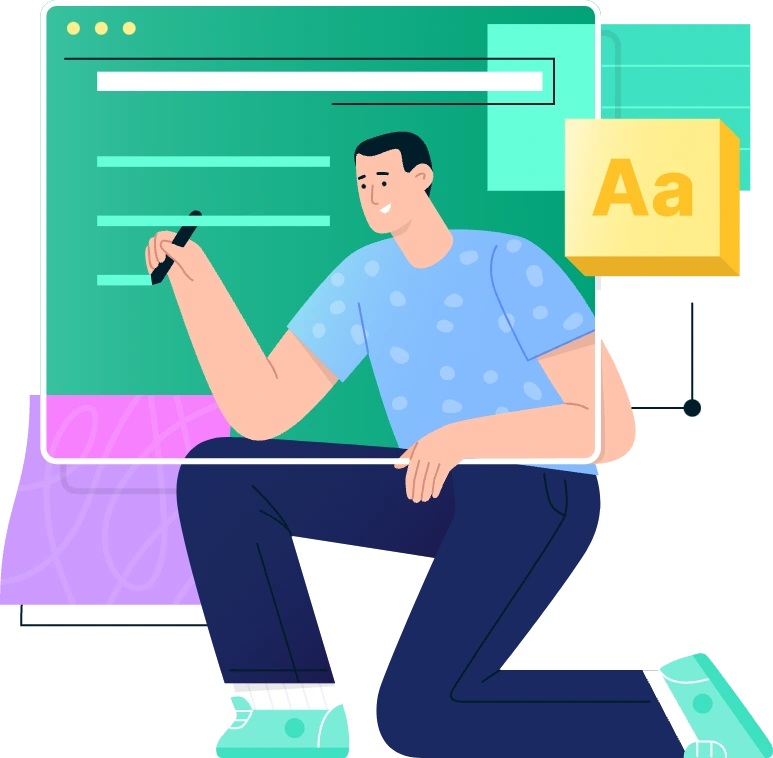
Copywriting – The definitive guide
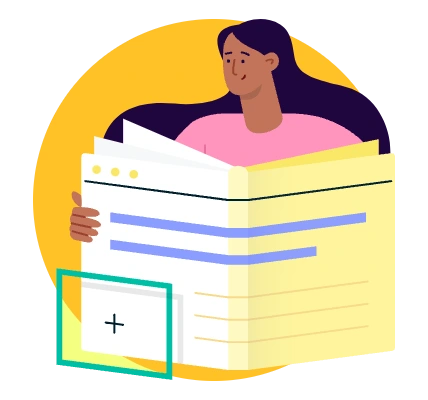
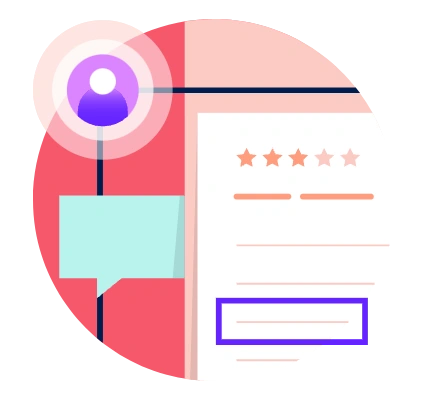
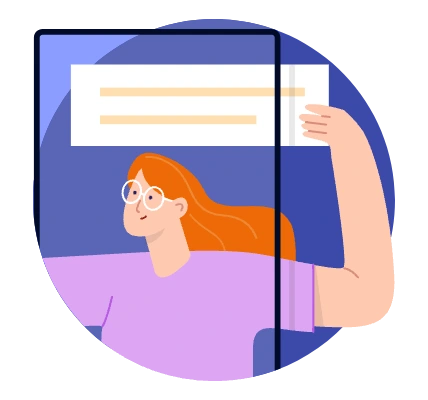
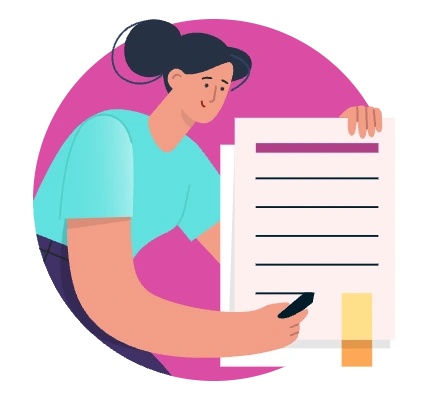
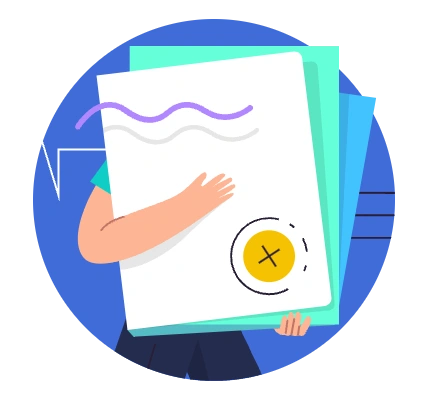
Copywriting is the practice of crafting written text in order to inform, inspire, or persuade. In most cases, copywriting is used to increase sales and conversions.
Mediums, where copywriting is implemented, include sales letters, blog posts, advertisements, and social media posts.
In today’s competitive world, advertising doesn’t guarantee any results. Using words that the target audience actually wants to read can yield positive outcomes.
Effective copywriting brings people closer to making a step toward the final desired goal; whether a purchase, signup, or donation. In short, the goal of copywriting is convincing the target audience toward action.
Why Is Copywriting Important?
In this age of video and podcasts, does copywriting still matter?
In a word: yes.
Before looking at the benefits of copywriting, let’s first comprehend the core duties of a copywriter.
What exactly does a copywriter do?
A copywriter is a professional writing occupation for advertising and marketing purposes. Brands that engage effective copywriters get better organic engagements and increased conversions. We shall cover more about this later.
Learning how to become a copywriter takes time and a little patience. Though it’s a core requirement for most businesses, copywriters with a deep understanding of how to carefully craft words that resonate with the target audience are hard to come by. This explains why this skill continues to be in high demand.
Here are some of the benefits that you can get from becoming good at copywriting:
Get higher conversion rates on key pages
Improve the structure and flow of articles
Get more engagement on social media posts
Have more people share your content
Understand your customer’s needs and wants
In other words: copywriting can improve nearly every element of your marketing.
Different Types of Copywriting
This obviously includes articles and sales pages. But copywriting also comes into play when creating:
Video scripts
Blog post headlines
Whitepapers
Social media posts
Webpage meta descriptions
Outreach emails
SEO Writing
Podcast descriptions
Interview questions
Facebook posts
About page copy
What Does a Copywriter Do?
Needless to say, a copywriter spends most of his or her day writing. However, there’s more to a copywriter’s job than putting words after words.
In fact, experienced copywriters spend significant amounts of time learning about their customers. They also invest time in understanding how the product they’re writing about can help their prospects.
If you’re writing copy for your own product or service then you probably already know what it is, how it works, and how it compares to the competition. So your job is to learn about your audience’s thoughts, fears and desires. And how they phrase these things in their mind. That way, you can write copy that speaks directly to them.
I cover more on how to do this in Chapter 2 of this guide.
How To Become a Copywriter
Fortunately, you don’t need any formal training or education to become a copywriter. Instead, you need to get good at the following skills:
Top Tips for Copywriting
To succeed in copywriting, possessing these skills helps you strategize, and give a narrative about your product/service to the target audience before giving a solution that infers the desired goal.
At a minimum, a good copywriter possesses these key skills:
Customer research
Sentence structure
Grammar and spelling
Persuasion
Content structure
Online advertising
Storytelling
To be clear: becoming a good copywriter takes time. But it’s a marketing skill that you can use to get clients as a freelance copywriter or to improve your job prospects.
In fact, according to the National Association of Colleges and Employers, 80.3% of employers want to hire people with strong writing skills.
And if you’re a small business owner (like me), you can use copywriting to improve your marketing and grow your business.
Reddit Threads
If you want to write as your customers talk, Reddit is one of the first places to look.
To use it, head over to a subreddit where your target customer hangs out.
Then, take a look at some of the most popular recent threads:
For example, let’s say that you just launched a new Paleo Diet Bar.
Head over to the Paleo subreddit and search for “bars”.
And look at the language people use to describe what they like and don’t like about the current bars on the market.
For example, I found tons of awesome copy in this one thread:
Copy that would work GREAT for a landing page, email or Facebook ad.
Amazon Reviews
As you’ve probably seen firsthand, people on Amazon don’t hold back:
Ouch…
And you can mine these honest reviews for a killer copy.
For example, check this Amazon review for a standing desk:
Well, if you also sell a standing desk, you just found some killer copy.
And I should point something out:
You can mine Amazon reviews… even if you don’t sell a physical product.
For example, I looked at reviews for a popular book about SEO on Amazon:
And found these golden nuggets:
This is a copy that I can use to describe my next online course or guide.
Customer Surveys
Customer surveys are SUPER helpful.
Specifically, you want to ask customers these questions:
“Why did you decide to buy [Your Product]?”
“What was the #1 thing that made you say: Yes, this is for me?”
“What have you tried before?”
“What was your experience with those other products?”
Yes, these responses are priceless for customer research, positioning, and creating new products.
But they also help you write copy that speaks directly to your target audience.
For example, here are actual responses from one of my recent customer surveys:
And depending on your product, you can also ask questions about:
Age and demographic info
Biggest struggles
Spending habits
Business challenges
For example, Backlinko is in the B2B space.
So I ask customers to paint a picture of where they’re at with their business:
Customer Interviews
Interviews are like customer surveys on steroids.
That’s because you can dig deeper with followup questions.
For example, a while ago I hopped on Skype with three people that recently graduated from one of my programs:
(Fun Fact: I was visiting family in Rhode Island when I did this interview. Hence the awesome flower curtains. 🙂 )
And I asked pretty much the same questions that I ask in customer surveys:
What’s your biggest challenge in SEO right now?
Where does getting more search engine traffic rank in terms of importance in your business?
Have you ever spent money on SEO training before? How did it go?
The big difference is that the interviews allowed me to ask follow-up questions.
These follow-ups helped me understand my customer’s challenges WAY better than a one-way survey response.
Here’s an example:
Social Media
Here’s how this works:
First, search for a competing product on Twitter:
Then, keep an eye out for complaints that crop up again and again:
And if your product has any of these “missing” features, make sure to emphasize that in your copy:
Product Hunt Discussions
You can use “Product Hunt Discussions” to learn how potential customers describe what you sell.
Why? 90% of the people that post a question on Product Hunt already Googled for a solution to their problem. And they came up empty.
So jot down the words people use to describe their problem…
…and create landing pages optimized around those terms:
With that, it’s time for chapter 3…
The Slippery Slide
The #1 goal of your copy is to keep people reading.
Or as legendary copywriter Joe Sugarman put it:
In other words, to us something that copywriters call a “Slippery Slide”:
You can create a slippery slide copy with “Bucket Brigades”:
Little stories:
And Open Loops:
The “AIDA” Formula
AIDA is a powerful copywriting formula that works for:
Sales pages
Blog post intros
Video scripts
And more
Here’s a visual of how it looks:
As you can see, AIDA stands for:
Attention.
Interest.
Desire.
Action.
Here’s a real life example of how I used the AIDA formula in this guide to landing pages:
First, I grab attention with the first line:
Then, I drum up interest with a bold promise:
And I tap into the #1 desire anyone landing on this page has (higher Google rankings):
I cap things off with a call to action that pushes the reader to scroll down:
Benefits > Features
The features are nice.
But benefits sell.
For example, let’s say you just launched a new piece of software designed to help people become more productive.
Here’s how you can turn boring features into tangible benefits:
CoSchedule’s product page does a GREAT job at this.
Yes, they touch on features:
But look at how big part of their copy is focused on benefits:
Very cool.
Strong CTAs
A strong call-to-action is the difference between a page that converts… and one that falls flat.
Seriously.
Here’s why your CTA is so important:
Your prospect is busy. VERY busy.
Which means they don’t have time to figure out what they’re supposed to do next.
So tell them exactly what to do.
For example, check out this landing page from Social Triggers.
This page uses a strong and clear CTA.
Not: “Sign up”. Not: “Register”.
It’s literally:
“Enter your name and email, and click “Download Free Ebook”.”
The Bottom Line
Use strong and clear CTAs whenever you want your prospect to do something. As you just saw, your CTAs don’t have to be fancy. Just tell them what to do.
Social Proof
According to the Nielsen Norman Group, people rely on social proof when they’re not sure what to do next.
In other words: social proof is important when someone’s deciding whether or not to buy what you sell.
That’s why pro copywriters PACK their copy with results, case studies and testimonials.
For example, Hotjar lets people know that they have 900,000 users:
Instead of raw numbers, at Exploding Topics, we feature companies that have signed up to our newsletter:
How to Solve The “Social Proof Paradox”
You need social proof to sell. But you need sales to get social proof.
I call this “The Social Proof Paradox”. And it’s a real challenge.
Fortunately, there’s an easy way to sidestep this problem:
Feature your strongest form of social proof.
For example, let’s say you launched a software product that has a free and paid version. But only a handful of people upgraded to a paid plan so far.
Well, you can show off how many people signed up for your free trial:
Or maybe you only have 20 total customers. But 3 of them got AMAZING results. Feature these 3 results on your homepage:
For example, when I launched my YouTube SEO course First Page Videos, we only had around 10 beta users. Not a ton of social proof.
But 4 of our beta students absolutely crushed.
(Including one student that quickly racked up 200k+ views with his first video.)
So we decided to feature those 4 people on the sales page:
Crystal Clear USP
USP=Unique Selling Proposition.
In other words, here’s where you answer the question:
“Why should someone buy from YOU?”.
Maybe you’ve got the best prices.
Maybe you deliver faster than anyone else.
Or maybe you guarantee results.
Either way, your copy needs to scream your USP at the top of its lungs.
And if you don’t have a USP?
Well, you’ve got bigger problems than copywriting. But that’s another story…
For example, the ecommerce site Warby Parker lets you try on frames at home… and return any pairs that you don’t like.
And they feature this super unique USP all over their site.
Sense of Urgency
How do you get customers to buy NOW?
Urgency.
Here are some easy ways to create a sense of urgency in your copy:
“Limited time offer”
“Quantities limited”
“Only 47 left”
“Sale ends on August 31st”
“Doors close on Thursday”
“Don’t miss out”
(Needless to say, these statements should be backed up with real limitations. Otherwise, you’ll lose people’s trust.)
For example, this email from one of my product launches has a clear deadline (down to the minute!) that creates a super high sense of urgency:
Be Insanely Specific
Your headline needs to be insanely specific.
In other words:
Your headline should tell your prospect EXACTLY what they’re gonna get.
For example, check out this blog post headline:
Not horrible. But not nearly specific enough.
Look at how much better this super-specific headline sounds:
And this rule doesn’t just apply to blog content.
For example, Snap.hr cites a specific timeframe for getting a result:
Use a Number
Numbers FORCE you to write insanely specific headlines.
For example, look at what happens when you take this bland headline…
…and add a number to it:
It’s MUCH more compelling… and specific.
Which is probably why an industry study from Moz found that number headlines got 327% more clicks than question headlines:
In fact, that’s exactly why I use numbers in most of my blog post titles:
Strong Emotions
The best headlines tend to be emotional headlines.
The question is:
How do you create emotional headlines?
First, add emotionally-charged words to your headline copy.
Here are a few examples:
Crazy
Now
Fast
Mistake
New
Breakthrough
Amazing
Obviously, you don’t want to go overboard.
No one’s going to believe a headline like “New Crazy Amazing Breakthrough That Works Fast!” 🙂
But adding one or two of these words to your headline can make it more compelling:
Second, pop your headline into the American Marketing Institute Headline Analyzer.
And it will give you a score from 0-100%.
I try to get my headlines to at least 30%… especially for sales pages and landing pages.
Use FOMO
FOMO can make your headlines 10x more powerful.
That said:
FOMO (Fear of Missing Out) doesn’t work for every situation.
But if you can use FOMO you should use FOMO.
That’s because FOMO triggers a strong emotion in your prospects…
…an emotion that makes them want to hear what you have to say.
For example, this Facebook ad headline from HubSpot includes the phrase “Limited Time Savings”:
Answer: WIIFM?
Let me know if this sounds familiar:
You land on a site.
And the first thing you see is a headline that’s all about THEM.
Who. The heck. CARES.
Instead, you want to write headlines that are all about your customer.
In other words, your headline should answer the question in your customer’s mind:
“What’s in it for me?”
For example, this homepage headline is:
Is the headline fancy?
Nope.
But if you’re looking to grow your Shopify store, this headline lets you know that you’re in the right place.
Start With a Hook
The first sentence of your lead is HUGE.
So make sure your first line grabs people by the eyeballs.
For example, this lead from one of our sales pages is designed to grab attention with a compelling stat:
And here are some “copy and paste” first lines that you can use in your leads:
“Does this sound familiar?”
“Now you can now [benefit] in [timeframe] without [common solution]”
“You know the feeling…”
“New study finds [surprising result]”
“Introducing: [product name]. A new way to [benefit] backed by [proof]”
“I struggled with [problem] for [X years]. Until one day…”
Use Mini-Stories
Stories are a great way to hook people… and keep them reading.
The problem is:
Your lead should be short and sweet. This means you don’t have a lot of room to tell an epic story.
Enter: Mini-stories.
As the name suggests, mini-stories condense a story into 4-5 lines.
For example, I kick off the sales page of my flagship course with a super short story:
Note: This lead is based on a real exchange with a prospective customer. I knew that lots of people related to how John felt. So I literally copied and pasted his message into the sales letter.
Complement the Headline
Sometimes your lead can just complement your headline.
In other words, you use your headline to grab their attention:
And drum up interest with your lead:
(Yup, that’s the “A” and “I” from the AIDA Formula.)
For example, the lead in the sales page for my YouTube SEO course builds on the promise in the headline:
8 Lines or Less
Whether it’s a blog post, video script, sales page or email newsletter, you want your lead to be SUPER short.
(8 lines max.)
Remember:
The goal of your lead is to grab someone’s attention so they keep reading.
And once you’ve done that, it’s time to transition into the meat of your page.
For example, I keep my blog post introductions to around 6 lines:
That way, I hook the reader with a strong lead… then jump right into the content itself.
Write Like You Talk
This is the ultimate copywriting superhack.
For example, check out this paragraph from one of my recent newsletter emails:
Sounds pretty natural, right?
That’s because I read all of my copy out loud.
(And I recommend that you do the same.)
If it sounds weird, I rewrite it.
But if my copy sounds good out loud, I know it’s good to go.
Short Sentences
Short sentences=better copy.
And there’s research to back this up…
The American Press Institute gave research subjects two different articles to read.
Article #1 had an average sentence length of 54 words.
Article #2 had an average sentence length of 12 words.
What happened?
People that read Article #2 had 711% better comprehension than Article #1.
Bottom line?
Use short sentences. They’re easy to read AND understand.
Write to ONE Person
In other words, AVOID copy like this:
Instead, write to one person:
This also applies to B2B.
B2B copywriters LOVE to write copy that speaks to absolutely no one.
Here’s an example:
And here’s an example of B2B copy that speaks directly to the reader:
Active Voice
Look at these two lines:
As you can see, the active voice sounds MUCH better.
How do you know if you’re using the passive or active voice? You can read this thorough guide from The University of Wisconsin.
You can also check the active vs. passive voice with a tool like Hemingway:
No Big Words
Big words don’t impress anyone.
In fact, they make your copy hard to read.
And as I like to say:
Hard to read = won’t read.
So avoid fancy words like these:
Utilize
Overwrought
Fascinating
Conscientious
Unparalleled
Demonstrates
You get the idea. 🙂
Instead, stick to terms that are easy to read and understand, like:
Use
Excited
Interesting
Notice
Unique
Show
Write For Skimmers
Here’s a good rule to follow for ALL of the content marketing that you do:
People online don’t read. They skim.
That’s why you want to format your copy for skimmers.
Here’s how:
First, use lots of subheadings.
These break up your content into little chunks.
For example, some time ago I published this post about how to do an SEO audit.
This post is 3,759 words.
And to make those 3,759 words easy to digest, I split them up into distinct sections.
In fact, I used 43 total subheaders in that post.
Second, use “takeaway lines”.
These sum up the biggest takeaway of each section of your post.
For example, in this post I listed out my 15 favorite link building tools.
And for every tool on my list, I covered key features, pricing and more.
So I added a little “Bottom Line” section after each tool:
That way, skimmers could get the gist… without reading every single word.
Email Newsletters
Here’s a simple template that you can use to write newsletters that people will actually want to open.
Let’s break it down.
Subject Line = Short and Sweet
Your subject line should outline your newsletter content… without giving away the farm.
For example, I used the super simple subject line “Backlinks” for one of my newsletters. And that email got a 46.3% open rate (to 92,232 subscribers).
That subject line lets people know that the newsletter is about backlinks.
But there’s still an element of mystery that makes you want to open the message.
Attention-Grabbing Lead
A compelling first line that hooks your reader right away. This line also shows up as a preview in Gmail. So it needs to be good.
Here’s an example:
Lesson as a Story
Your newsletters should sound like they’re from a friend.
So share your lessons and tips in the form of a story.
(And yes, this applies to “corporate newsletters” too.)
For example, look at CoSchedule.
Even though they have dozens of people working for them, their newsletters don’t feel like it.
Their emails are personal, funny and sent from a single person (Jordan):
Clear Call-To-Action
Let your reader know EXACTLY what to do next…
…whether it’s to sign up for a free trial, read a blog post or make a purchase.
Use a P.S.
Most people can’t resist reading a P.S.
This is why I recommend ending your newsletters with a P.S. that sums up your offer and CTA.
Here’s a PS that I used in one of my recent newsletters:
With that, let’s check out our next template…
Landing Pages
Here’s how to create high-converting service pages, newsletter signup pages and more.
Let’s break each element down.
Headline = Clear Benefit
Your headline should let the reader know what they’ll get from your product, service, newsletter, or free trial.
For example:
Social Proof
Include social proof above the fold. This can be logos from places you’ve been featured, the number of customers or a handful of big-name clients.
Here’s an example:
Body = PAS
The meat of your landing page should follow the “Problem, Agitate, Solve” formula. Start with your prospect’s #1 problem, highlight how annoying that problem is, then tease a solution.
Transition
The transition from your prospect’s problem to a specific offer.
Here’s a cool example of this transition action:
CTA
Let your reader know exactly what to do next, whether it’s scheduling a demo, buying something, or signing up.
Blog Posts
Here’s a template you can use to create blog posts that drive traffic and email subscribers.
Let’s break it all down.
Headline = Insanely Specific
Let your reader know exactly what they’re going to learn. More specific=more clicks.
Here’s an example from one of my posts:
Short Intro
Keep your intro to less than 8 sentences.
Intro = Proof and Preview
Your intro should prove you can deliver on the headline’s promise. And preview what they’ll learn.
For example:
Actionable Content
Pack your post with actionable tips, techniques and strategies that people can use right away.
For example, my post about getting more traffic includes ZERO fluff or “high level” advice.
Instead, it’s all super actionable stuff that you can use right away:
Lots of Examples
Examples make your content easier to understand and use.
That’s why I use tons of examples in every post:
Conclusion = CTA
Ask your reader to leave a comment, subscribe to your newsletter, or both.
Sales Letters
Here’s how to structure long-form sales letters for online courses, supplements, paid newsletters, and more.
Headline = Bold Promise
Grab your reader’s attention with a bold headline. Your headline should cite one insanely specific benefit that they’ll get from your product.
Here’s an example:
Powerful Lead
Start your sales letter off with a story, statistic or relatable situation.
This is a great example:
“D” and “A” From AIDA
Your headline and lead checked off the “Attention and “Interest” in the AIDA Formula. The middle of your sales letter should create the desire for your product… and push them to take action.
Bullets
Use bulleted lists of benefits throughout your sales page.
Here’s an example of super compelling bullets:
Testimonials
Use lots of testimonials from people that your prospect can easily relate to.
This is a great example of a non-spammy testimonial:
Risk Reversal
“Cancel anytime”. “60-day guarantee”. “No questions asked”. “Try now. Decide later”. Pack your sales letter with risk reversals. They make signing up a no-brainer.
Lots of Call-To-Actions
Your sales letter should have CTAs up and down the page.
Use “Crooked Numbers”
“Crooked Numbers” are numbers that aren’t rounded.
For example:
57
8,913
41.9%
12.4
As it turns out, crooked numbers are more believable than round numbers.
That’s why you DON’T want to round numbers in your copy.
For example, check out the intro from one of my recent blog posts:
I could have rounded up my monthly traffic to something like “over 500,000”.
But I went with the exact number:
Sellin’ Ain’t Tellin’
I once asked a successful salesman his #1 sales tip.
His answer:
Sellin’ ain’t tellin’
In other words:
Don’t talk about your product.
Instead, SHOW people what it can do.
For example, this landing page talks about why their digital currency is “Made For You”.
But I still have no idea how it actually works.
On the other hand, the Coinbase homepage shows you exactly how it works:
Use Clear Button Copy
Most people put zero thought into their button copy.
And it’s a big mistake.
Why?
Because clicking a button is usually the last step for any conversion on a website.
With that, here’s how to write high-converting button copy:
Make the outcome crystal clear.
For example:
I offer a guide at the bottom of the Backlinko homepage:
I could have made the button say:
“Learn More”.
Instead, I made the outcome insanely specific:
And this is one of the main reasons that my homepage converts at 6.64%:
How to Get Out of “The Friend Zone”
We’ve all been in “The Friend Zone” before.
(Or at least I have… 😀 )
The Friend Zone is when you like someone. And they like you back… as a friend.
As it turns out, the same thing happens with potential customers and clients.
They like what you’re selling… but not enough to buy.
What’s the solution?
Squash objections.
Objections like:
“It’s too expensive”
“Not a good time”
“Will this work for me?”
“I’m not ready to switch from Product X”
You see, most people pretend that these objections don’t exist.
Instead, you want to bring these objections up… and squash each and every one of them.
Here’s a great example:
Let’s summarize how to write a killer copy for your target audience:
Copywriting Explained in 14 Steps
Research and know the target audience
Speak the language of your audience by using the right tone and language
Create compelling titles and headings
Connect with the readers by appealing to their desires
Use action verbs, with specific CTAs
Make comparisons to build authenticity and utility
Incorporate customer surveys, studies and highlight findings in crooked numbers
Anticipate objections (like everything else in life, don’t expect a smooth sail). Counter any objections with empathy, facts, and genuine concern to convert even the skeptics
Try to be as convincing as possible. Effective copywriters convert by harnessing the power of words
Tell relatable stories but remember to be direct by utilizing an active voice
Probe the audience with questions likely to elicit positive responses
Emphasize the key topic throughout the piece. Don’t cover different areas within one article
Write as you speak, and always aim for a conversational tone with one person
Benefits sell. In short, tell the target audience what they stand to gain by following the CTA.
Like this project
Posted Sep 22, 2023
Learn and understand how effective copywriters write highly-converting text, ads or any marketing content connecting with the target audience.
Likes
0
Views
42



